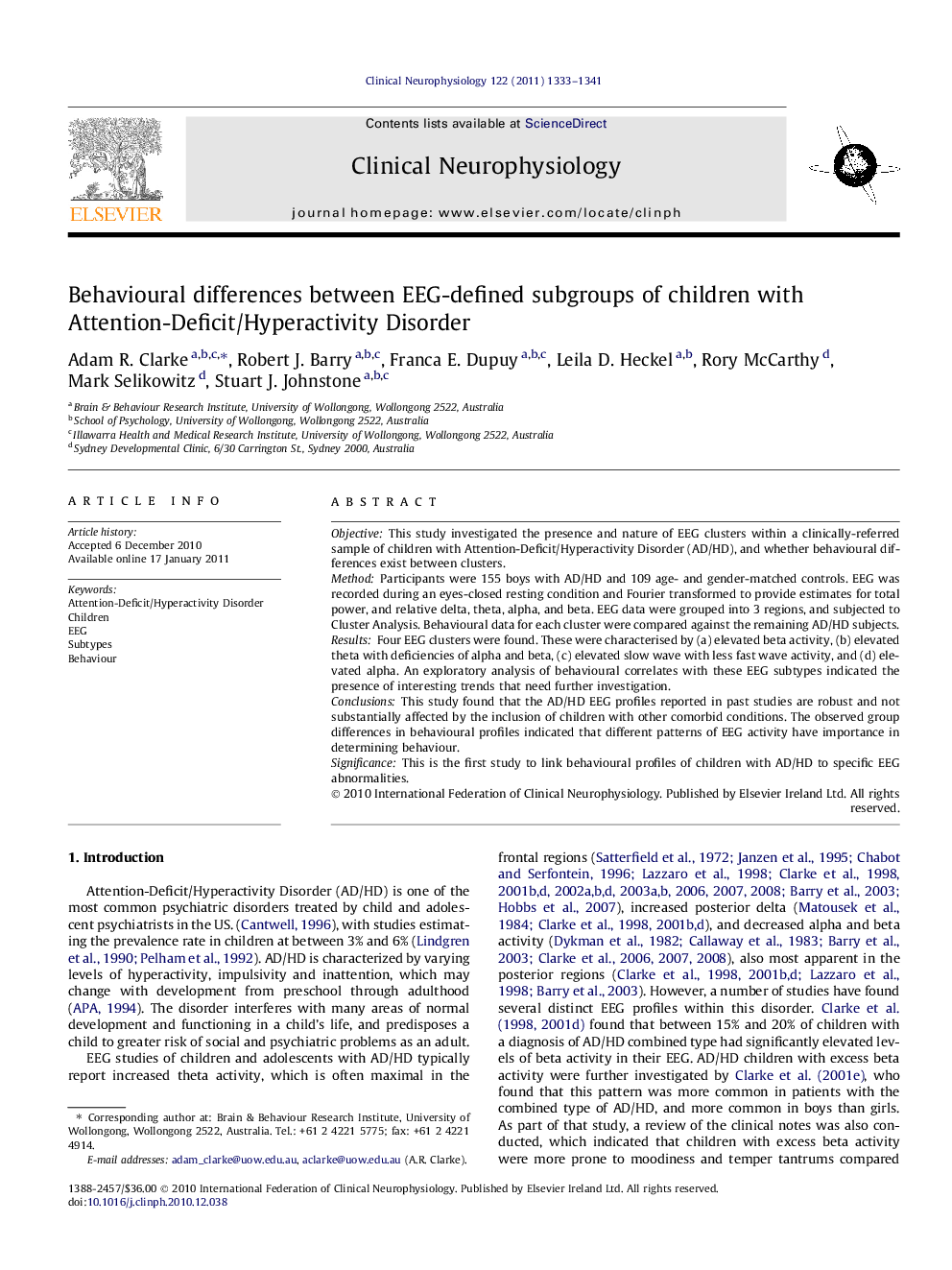| Article ID | Journal | Published Year | Pages | File Type |
|---|---|---|---|---|
| 3044777 | Clinical Neurophysiology | 2011 | 9 Pages |
ObjectiveThis study investigated the presence and nature of EEG clusters within a clinically-referred sample of children with Attention-Deficit/Hyperactivity Disorder (AD/HD), and whether behavioural differences exist between clusters.MethodParticipants were 155 boys with AD/HD and 109 age- and gender-matched controls. EEG was recorded during an eyes-closed resting condition and Fourier transformed to provide estimates for total power, and relative delta, theta, alpha, and beta. EEG data were grouped into 3 regions, and subjected to Cluster Analysis. Behavioural data for each cluster were compared against the remaining AD/HD subjects.ResultsFour EEG clusters were found. These were characterised by (a) elevated beta activity, (b) elevated theta with deficiencies of alpha and beta, (c) elevated slow wave with less fast wave activity, and (d) elevated alpha. An exploratory analysis of behavioural correlates with these EEG subtypes indicated the presence of interesting trends that need further investigation.ConclusionsThis study found that the AD/HD EEG profiles reported in past studies are robust and not substantially affected by the inclusion of children with other comorbid conditions. The observed group differences in behavioural profiles indicated that different patterns of EEG activity have importance in determining behaviour.SignificanceThis is the first study to link behavioural profiles of children with AD/HD to specific EEG abnormalities.
